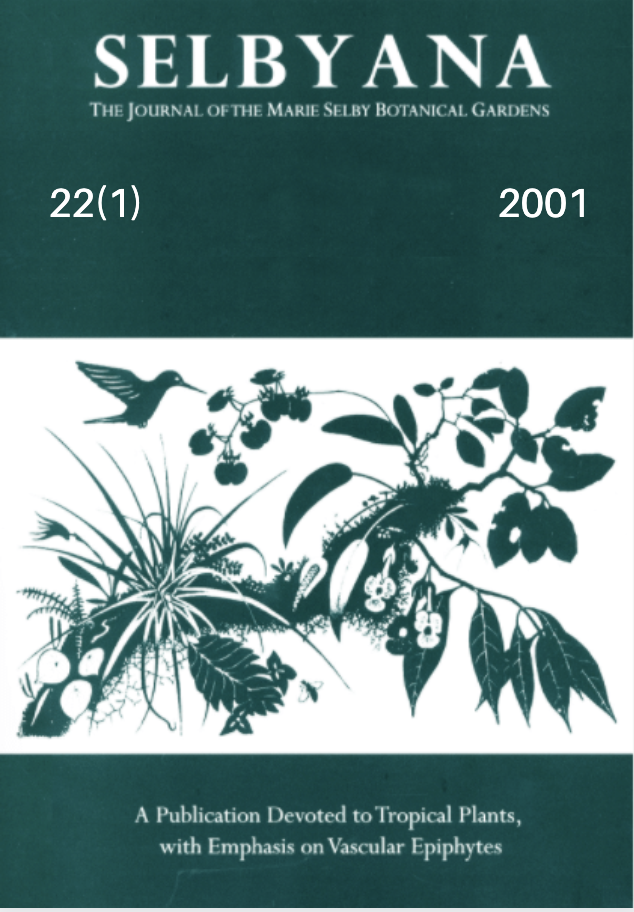Abstract
The population structure of three epiphytic orchids (Lycaste aromatica, Jacquiniella teretifolia, and J. leucomelana) was studied in a Mexican humid montane forest. We measured all individuals on several trees and related plant size, number, and fertility to branch height and diameter. While Lycaste preferred thick branches, which are usually more shaded and stable, Jacquiniella spp. grew on thinner and more exposed branches with a higher rate of branchfall. The size-class distribution of Lycaste was relatively homogeneous, pointing to low recruitment and high survival. Jacquiniella leucomelana had a much higher proportion of juveniles, suggesting high recruitment and low survival. In J. teretifolia, recruitment appears irregular. The observed size classes and fertility rates are interpreted to reflect strategies of species adapted to different branches and, in part, as effects of individuals growing on branches of different sizes and stabilities. Using the regular production of pseudobulbs in Lycaste, we estimated the age when the first plants become fertile (10 years) and the time to reach full size (ca. 20 years).
Open Access and Copyright Notice
Selbyana is committed to real and immediate open access for academic work. All of Selbyana's articles and reviews are free to access immediately upon publication. There are no author charges (APCs) prior to publication, and no charges for readers to download articles and reviews for their own scholarly use. To facilitate this, Selbyana depends on the financial backing of the Marie Selby Botanical Gardens, the hard work and dedication of its editorial team and advisory board, and the continuing support of its network of peer reviewers and partner institutions.
Authors are free to choose which open license they would like to use for their work. Our default license is the Creative Commons Attribution-NonCommercial 4.0 (CC BY-NC 4.0). While Selbyana’s articles can be copied by anyone for noncommercial purposes if proper credit is given, all materials are published under an open-access license with authors retaining full and permanent ownership of their work. The author grants Selbyana a perpetual, non-exclusive right to publish the work and to include it in other aggregations and indexes to achieve broader impact and visibility.
Authors are responsible for and required to ascertain that they are in possession of image rights for any and all photographs, illustrations, and figures included in their work or to obtain publication or reproduction rights from the rights holders. Contents of the journal will be registered with the Directory of Open Access Journals and similar repositories. Authors are encouraged to store their work elsewhere, for instance in institutional repositories or personal websites, including commercial sites such as academia.edu, to increase circulation (see The Effects of Open Access).
